Quick Guide to the Sedar and the Passover Meal (What to Expect)
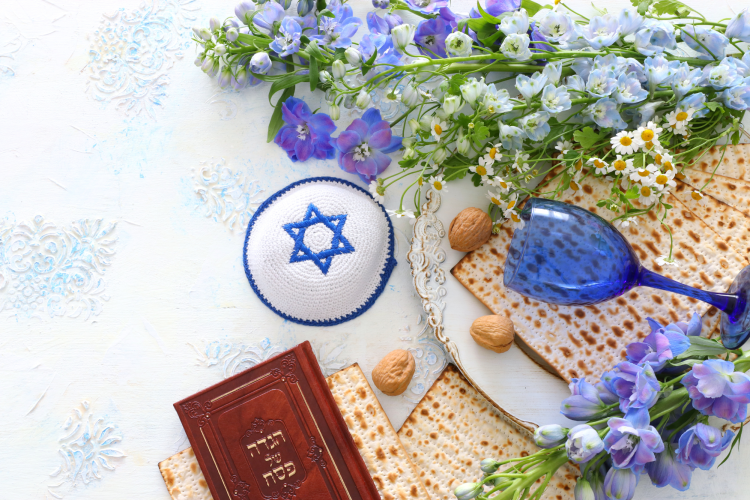
The Passover meal (Pesach in Hebrew), known as the Seder, is a key part of the Jewish festival of Passover, which celebrates the Israelites' escape from slavery in Egypt. While traditions vary across different communities, the Seder follows a structured order filled with symbolic foods, prayers and storytelling. Passover lasts seven or eight days, depending on the location. While the Seder takes place on the first night in Israel, in many other countries, there are two Seders on the first and second night of Pesach. Some Passover meal traditions are lively and theatrical, with songs and skits, while others are brief and focused on the meal itself. No matter the style, certain customs and symbols remain central.
At the heart of the table, you'll find wine, a stack of matzah (unleavened bread), and a special cup of wine set aside for Elijah the Prophet, who is said to visit every Seder. Some families will even have a separate chair for Elijah. Then there is a seder plate. It can be anything from a fancy ceramic piece imported from Israel or a makeshift number put together from picnic ware. This plate holds specific Passover foods, each representing a part of the Passover story. Whether you're attending a Passover meal for the first time or just want a refresher, this guide will walk you through what to expect: from the blessings over wine and matzah to the famous Four Questions and the search for the hidden afikomen.
Jump to Section
- The Passover Meal: The Seder Dinner
- What 7 Traditional Foods Are Eaten at the Seder and What Do They Symbolize?
- What Are the 5 Forbidden Foods on Passover?
- The 5 Elements of the Passover Meal
- What Kind of Meat Is Eaten for Passover?
The Passover Meal: The Seder Dinner

Passover is a celebration of miracles, resilience, love and freedom. To honor the victory over slavery, Jewish families gather around a table filled with symbolic foods, each representing a different part of the story. But the Passover meal is about more than just the Passover food; it’s a rich tradition filled with customs that bring deeper meaning to the holiday.
The evening begins with a series of rituals: blessing the wine, washing hands, dipping vegetables in salt water and breaking the middle matzah. Half of this matzah, called the afikomen, is hidden for children to find later in the night. Then comes the main part of the seder — the retelling of the Exodus from Egypt. After the storytelling, a few more customs take place: more handwashing, eating matzah, bitter herbs (maror) and then a matzah and maror sandwich, before moving on to the meal itself. What is the Passover meal called today? The Passover meal is called the Seder, and it is a central part of the celebration. Here’s a more detailed overview of Passover meal traditions and their significance.
The Seder is structured in a very specific order. While some families rush through each item, skipping songs and fast-tracking the evening, others are very detailed and particular, adding in new interpretations from scholars and modern science or culture to explain areas in more detail. Be warned if this is your first time attending a Seder and Passover meal, it could go on for hours. The order of events has 15 sections:
- Kadeish (blessings and the first cup of wine)
- Urchatz (wash hands)
- Karpas (appetizer)
- Yachatz (breaking of the middle matzah)
- Magid (relating the Exodus) — this is the main event of the items and includes the asking of the Four Questions, relating to the Four Sons and telling of the Ten Plagues.
- Rohtzah (ritual washing of hands)
- Motzi (blessings over the Matzah)
- Matzah
- Maror (bitter herbs)
- Korech (sandwich)
- Shulchan Orech (the meal)
- Tzafun (eating of the afikoman)
- Bareich (Grace after Meals)
- Hallel (songs of praise)
- Nirtzah (conclusion)
What 7 Traditional Foods Are Eaten at the Seder and What Do They Symbolize?
What is the traditional meal for Passover? The Seder plate features different circles, each containing a specific food item, and each of these foods holds a unique significance in the Passover celebration. If you're interested in learning more about Passover foods and their symbolic meanings, be sure to check out our exciting guide on Passover Foods! For now, let’s explore the seven traditional Passover foods you can look forward to.
1. Karpas

The first item on the Seder plate is karpas, a green vegetable — often parsley or celery — that symbolizes new beginnings and the initial prosperity of the Israelites in Egypt. Before eating it, karpas is dipped in salt water or vinegar. The salt water represents the tears shed by the Israelites during their enslavement, serving as a reminder of both their suffering and the hope of renewal.
Some interpretations also connect the Hebrew word karpas to the harsh labor endured by the 600,000 enslaved Jews. The last letter of karpas (samech) has a numerical value of 60, alluding to 60 times 10,000, while the remaining letters spell perech, meaning “hard work.” Together, these meanings reflect both the hardships of slavery and the promise of freedom.
2. Maror

Maror, or bitter herbs, is an essential part of the Seder meal and is eaten twice; once on its own and once with matzah. Before the first bite, a special blessing is recited and each time, the herbs are dipped into charoset before being eaten.
The bitterness of maror serves as a powerful reminder of the suffering and hardships the Israelites endured as slaves in Egypt. The sharp taste can even bring tears to the eyes, symbolizing the pain of oppression. To fulfill this tradition, at least one ounce of bitter herbs is eaten, first dipped in charoset and then shaken off. When eating maror on its own, the blessing “al achilat maror” is recited, and it is consumed without reclining. To borrow words from the last of the Four Questions, relating to why those who celebrate recline on Passover night, "We recline at the Seder table because in ancient times, a person who reclined at a meal was a free person, while slaves and servants stood."
3. Charoset
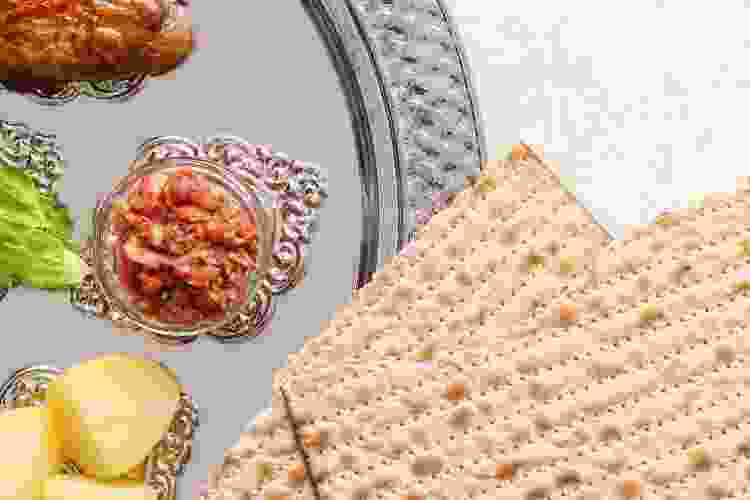
Charoset is a sweet and flavorful mixture of chopped apples, nuts, honey, raisins and cinnamon. On the Seder plate, it symbolizes the mortar the Israelites used to build for the Pharaoh while they were enslaved in Egypt. Despite its connection to hard labor, charoset’s sweetness serves as a reminder that even in difficult times, hope for freedom can bring comfort.
During the Seder, charoset is often eaten after the bitter herbs (maror), balancing their sharpness with its rich, sweet taste. This contrast reflects the Israelites' experience: bitterness and struggle softened by the promise of redemption.
4. Chazeret
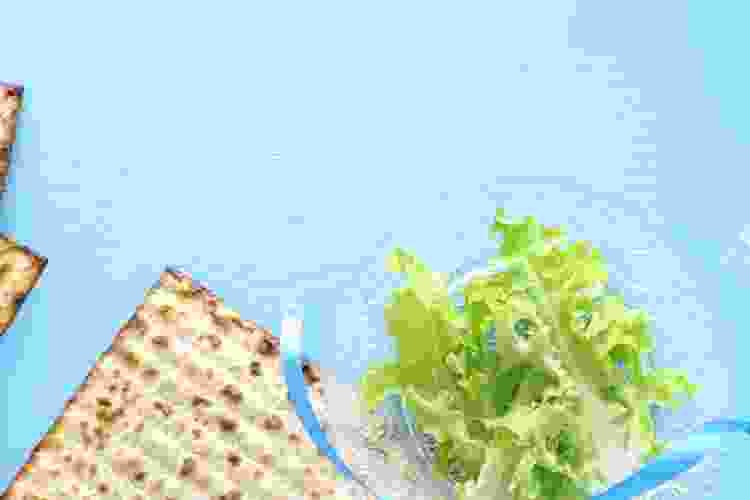
Chazeret is the second bitter herb on the Seder plate, usually represented by romaine lettuce. While its leaves are mild, the roots have a bitter taste, symbolizing the hardship of slavery. Like maror, chazeret serves as a reminder of the suffering the Jewish people endured in Egypt.
5. Beitza
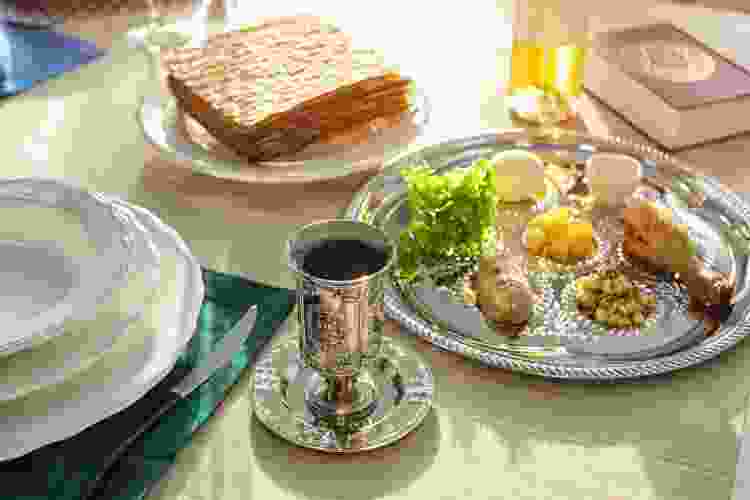
The Beitza, or roasted egg, is a powerful symbol of the cycle of life, renewal and resilience. It also represents one of the sacrificial offerings that were made in the Second Temple, which no longer stands. Before eating, the egg — usually hard-boiled — is dipped in salt water, a reminder of the tears shed in mourning for the lost temple. Some people eat it on its own, while others enjoy it with salt water or alongside gefilte fish, a traditional poached or baked fish patty often served as a starter.
6. Zeroah
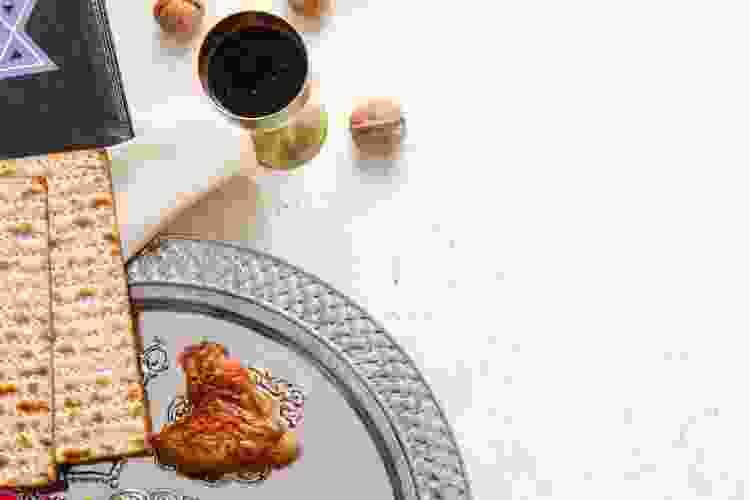
The zeroah is a roasted shank bone, typically from a lamb or chicken, that is placed on the Seder plate during Passover. Though it is not eaten, it holds deep significance, serving as a reminder of the original Passover meal in the Bible. What is a Passover meal in the Bible? This meal, celebrated in the book of Exodus, marks the Israelites' escape from slavery in Egypt. The zeroah symbolizes the paschal sacrifice the Israelites made on the night they left Egypt and the sacrifices once offered in the Temple in Jerusalem. Its presence on the Seder plate connects the past to the present, highlighting themes of redemption and faith.
7. The Three Matzot
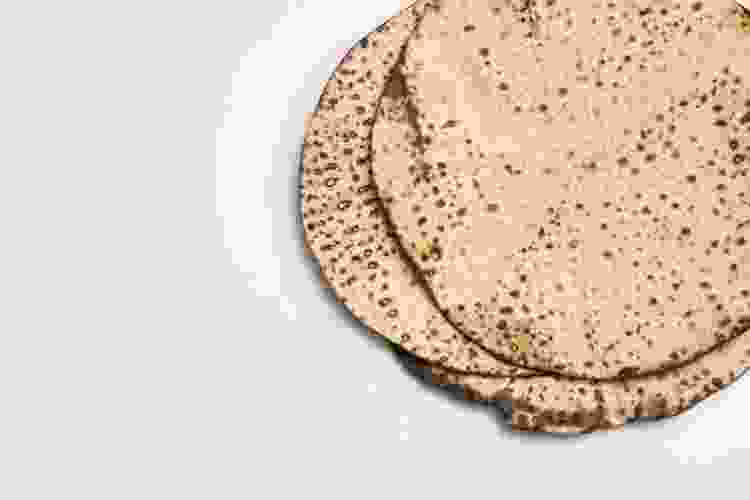
Matzah is one of the most recognizable Passover meal traditions. This unleavened, cracker-like bread symbolizes the haste with which the Israelites left Egypt as they had no time to let their dough rise. During Passover, matzah replaces regular bread throughout the week.
At the Passover meal, three matzot are placed on the table. The middle one is broken in half, with the smaller piece returned to the Seder plate. This broken matzah, known as the "bread of poverty," remains visible while telling the story of Exodus. The larger piece is set aside for later as the afikoman, which plays a key role in the meal.
During the Passover meal, blessings are recited over the matzot. First, all three are held together while saying the blessing over bread. Then, the bottom matzah is set down, and a second blessing is recited over the top whole matzah and the broken middle piece. After that, pieces of the matzah are eaten while reclining, as a sign of freedom. Later in the Passover meal, the hidden afikoman is brought back and eaten as a symbolic Passover "dessert." Everyone is encouraged to eat at least 1½ ounces of matzah before midnight, and after the afikoman, no other food or drink is consumed except for the last two cups of wine.
Once dinner is over, the afikomen is found, and the lucky winner gets a prize. While some Seders end here, others continue with Birkat Hamazon (the grace after meals), the symbolic opening of the door for Elijah the Prophet, and a final round of wine. The evening often closes with the famous phrase: "Next year in Jerusalem" and traditional songs like Echad Mi Yodea and Chad Gadya.
What Are the 5 Forbidden Foods on Passover?
One of the key practices of Passover is avoiding leavened foods such as bread because the Israelites didn’t have time to let their bread rise as they hurried to escape Egypt. This means leavened grains like wheat, barley, rye, spelt and oats are not allowed, as they are considered forbidden "grains." In addition, processed foods, rice, beans, peanuts, corn and lentils are also off-limits. This goes for alcoholic beverages like beer, whiskey, scotch and bourbon, too, as they are fermented using grains. This is the same reason why matzah is a central part of the celebration. Jewish law requires matzah to be made within 18 minutes after water is added to the flour, as any longer would cause fermentation. So when making matzah, set a timer for 18 minutes to ensure it remains unleavened.
The 5 Elements of the Passover Meal
1. Removing Leaven
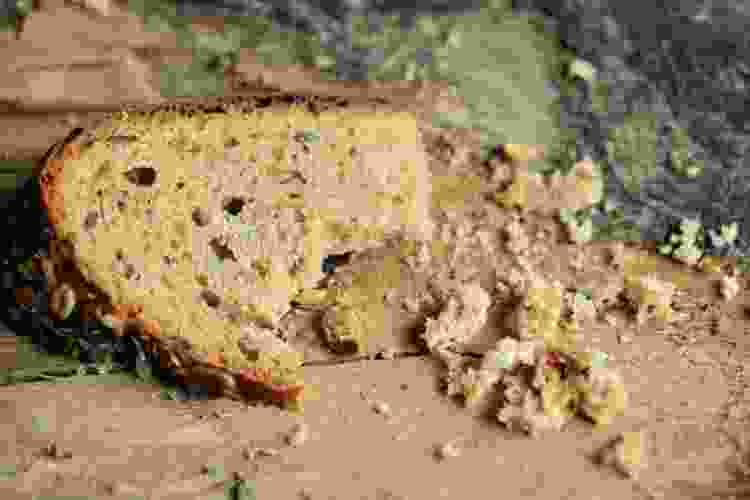
One of the first tasks before Passover is to remove all leaven from the house. Leaven represents sin in Jewish tradition, and its removal is a symbolic act of cleansing. The house is thoroughly cleaned and anything containing leaven is discarded.
2. Washing the Hands
Once the house is clean, the family gathers around the table to wash their hands. This act of washing is one of the 5 elements of the Passover meal and symbolizes purity and preparation for the sacred Passover meal.
3. Lighting the Candles
With the house and everyone in it prepared, the woman of the house lights the Passover candles, marking the official start of the Seder. This is a significant moment, as the lighting of the candles brings light into the home.
4. Hagaddah
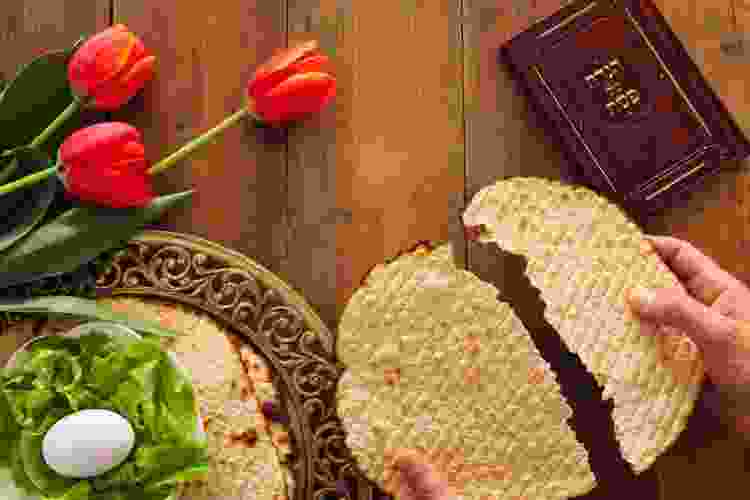
At the heart of the seder is the Haggadah, a book (or sometimes a printed guide) that walks you through the evening’s customs and readings. Haggadot come in all kinds: some are simple, others more detailed, and they can be in Hebrew, English or even include modern commentary. There are versions designed for kids, interfaith families and even activists.
Rather than simply narrating the story, the Haggadah includes rabbinical discussions that explore the themes of memory, liberation and redemption. The idea is not just to recount history but to reflect on how these lessons still apply today. At many seders, participants take turns reading aloud from the Haggadah. Some families add songs, discussions or even creative traditions, like pouring water on the floor to symbolize the parting of the Red Sea. Some seders are short and to the point, while others go late into the night.
5. Kiddush
The four cups of wine at the Passover meal symbolize important moments in the Jewish journey from slavery to freedom. Each cup represents a different stage of this story. The Seder begins with a blessing over the first cup of wine, which takes us back to the early days in Egypt. The second cup recalls the final meal the Israelites had in Egypt as slaves and serves as a reminder of the Ten Plagues and the suffering of the Egyptians when they refused to listen to God. The third cup is drunk after the meal, marking the moment when the Israelites stood at the edge of the Sea of Reeds, waiting for freedom. This is the Cup of Redemption, symbolizing the blood of the innocent Lamb that led to their redemption from Egypt. Finally, the fourth cup represents the time at Mount Sinai, when the Israelites prepared to enter into a covenant with God. This is the Cup of Hallel, meaning "praise" in Hebrew.
What Kind of Meat Is Eaten for Passover?

For Passover, traditional Jewish law requires that the meat be kosher, following specific dietary guidelines outlined in the Torah — similar to how families carefully select Hanukkah gifts to honor tradition. Kosher meat must come from certain animals (such as cattle, sheep or goats) that are slaughtered in a particular way, ensuring the meat is free from blood and prepared according to Jewish law. During Passover, the most common meats served include lamb, chicken or beef, often roasted or grilled, though these differ from traditional Hanukkah food like latkes and sufganiyot.
The concept of kosher shares similarities with Halal, the dietary guidelines followed in Islam. Both kosher and Halal rules prohibit the consumption of certain foods, like pork, and both require animals to be slaughtered in a humane and specific manner. While there are differences in the details of the practices, the core principle is the same: ensuring that food is prepared according to religious laws for both spiritual and health reasons.
Just as Hanukkah decorations help set the scene for that holiday, the symbolic foods of Passover play a pivotal role in bringing the story of Exodus to life. From answering questions like "What are the six items on a Seder plate?" to offering inspiration on how to recreate the original Passover meal, we’ve covered each element of the Seder here. The foods on the Seder plate serve as lasting reminders of the Israelites' journey and the deeper meaning of Passover, and whether you’re taking part in a traditional Ashkenazi or Sephardic Seder, these symbolic foods of the Passover Meal guide you through the story and its timeless lessons.
For even more fun Passover ideas, check out other experiences happening on Classpop!

